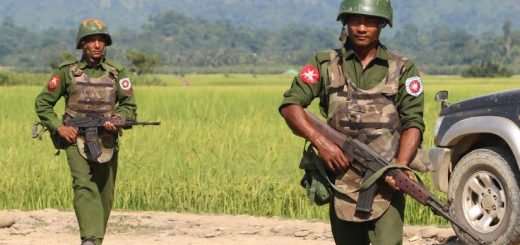What’s next to Syria | Analysing Situation in the Golan Heights

An Israeli soldier guards an Iron Dome air defence system in the Golan Heights | Image: Washington Post
Golan Heights has always been a matter of debate between Israel and Syria. The history of the area dates back to 1967 when Israel occupied it, following an annexation in 1981 which till date has not been recognised by the international community. In 2016, the United Nations Security Council rejected Israel’s claim over the area and matters of law and jurisdiction on Israel’s part was declared null and void. Israel is now becoming a centre of power in the chaotic Syrian War, as the country has always looked after its security interests in the area, with respect to the Iranian and Hezbollah troops monitoring the border areas.
However, on Monday, the war-torn country Syria seized a very strategic hill overlooking the Israeli occupied Golan Heights. Assad’s loyal troops took control of the ‘Al Haara’ hill which was part of the mission undertaken to retake the remaining areas of the Quneitra province along the Israeli borders. The hilltop which was occupied by the rebels have been heavily bombed by both the Syrian and Russian military. The problem of the Syrian War is no longer confined to its geographical borders, and most of its neighbouring, as well as international communities, have tried to use its ground for their own interests. It is turning into a field for other countries to play their interests as the presence of the Iranian forces is only a way of being connected with the Lebanese Hezbollah group, and Israeli forces are concerned with the presence of the Iranian forces and their influence. The Syrian troops might have taken over the hill, but Israel promised of not intervening as long as the troops are away from the ‘demilitarized’ zone. The Syrian troops are marching towards the seizure of ‘the triangle of Death’ connecting the provinces of Derra, Quneitra and southern Damascus. Meantime, the Trump-Putin meet in Helsinki talked of ensuring complete security to Israel, and assured that Israel’s security concerns for the presence of Iranian troops in the region will also be addressed together by both the nations.
The Syrian population residing in the Golan Heights have boycotted the municipal elections earlier this year, as the people weren’t ready for the ‘Israelization’ of their territory. The young generations are surrendering their Syrian identity and accepting the Israeli citizenship as they are tired of the war and all these sects of people want are to have better economic conditions for themselves, as the war had cost them everything they had. These are the people who do not wish for another war between their country and the Israelis over Golan Heights, an area for which even the world community has failed to provide a resolution to. The next step of the Syrian troop or the government is unknown and whether Golan Heights be actually brought back to its homeland as claimed by the Syrians. But the biggest controversy arises in terms of the allies Israel has, which it can always turn back to is Russia and the United States of America. Israel Prime Minister, Benjamin Netanyahu has time and again confirmed that the international community is ‘wasting’ time in the only surviving democracy in the Middle East and that the Golan Heights will remain under its sovereignty. The claim on territory has always been an issue for any sort of disagreement between nations, history is clearly an example of it and now with the Golan Heights, there is a possibility that another disagreement might take place. Some Syrian groups residing in the area tried to cross the border when the Israeli forces stopped them around 200 meters away from the border. The Syrian people are the ones suffering from this chaos that had erupted 7 years ago and this incident could throw their own land again into a state of turmoil with Israel.
Also Read: Brussels Meet: Another Somali attempt towards Peace and Political Development
*Arijita Sinha Roy is the Research Intern at The Kootneeti


















